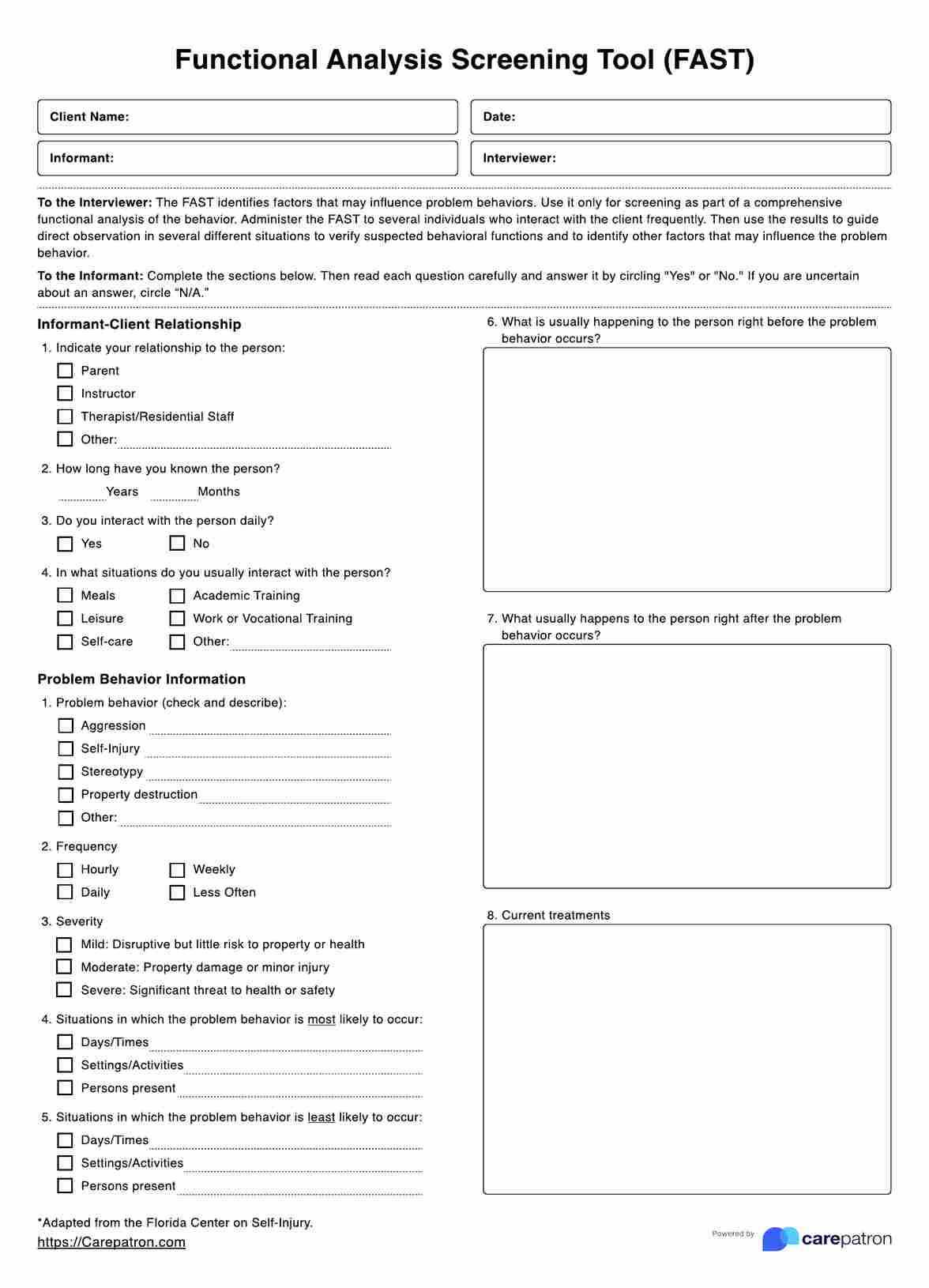The Florida Center on Self-Injury created the Functional Analysis Screening Tool. The template you can download from us was adapted from the 2005 version of the screening tool.

Functional Analysis Screening Tool
Issue the Functional Analysis Screening Tool (FAST) to a person reporting on someone suspected of having behavioral problems and have them fill it out. The results should help you determine what directives to give for further investigation.
Functional Analysis Screening Tool Template
Commonly asked questions
Because the healthcare professional does not spend time with the client, they can’t exactly see the problematic behaviors unfolding. That’s why the assessment will be used by informants. They will be reporting on someone that they probably see on a daily basis for them to suspect the person of having problematic behaviors.
While there aren’t any particular calculations or directives in the scoring section of the screening tool, there are designations. If the client is consistently scoring the same scores every time they are observed, that should give the healthcare practitioner enough information on what to do next, which will likely be the development of an intervention plan or a comprehensive examination of the client.
EHR and practice management software
Get started for free
*No credit card required
Free
$0/usd
Unlimited clients
Telehealth
1GB of storage
Client portal text
Automated billing and online payments











